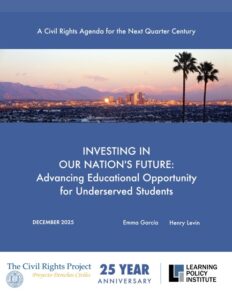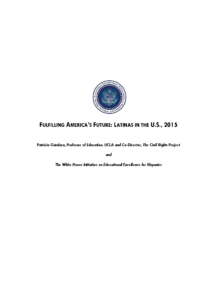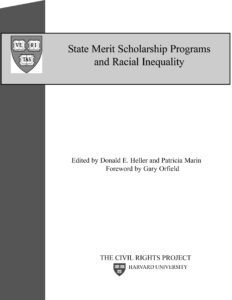From the Foreword by Gary Orfield:
A central dream of American parents is sending their kids to college. What used to be unusual has now become a necessity if young people are to have a secure life in the middle class in a post-industrial economy. As such, one basic goal of higher education policy should be to make certain that this opportunity is not foreclosed by a family’s income or wealth. In a society where 40 percent of students are non-White, it is more important than ever to be sure that minority students can go to college. In a society that does not believe in welfare or social supports, and where fairness rests on supposedly equal access to the education needed for economic success, these should be basic principles. In a society where the cost of college is soaring, affordability is a basic dimension of fairness. Unfortunately, it is being lost in too many state policy changes.
Many of our states have been cutting the share of state income going to college education and allocating a larger share of it to relatively new but very rapidly growing programs of “merit” aid. At the same time there has been a huge expansion of federal aid to middle class families and students, mostly in the form of loan subsidies and tax subsidies, which are now far larger than federal aid provided to poor students. In contrast to the period of the l970s, when public four- year college tuitions were low and aid for poor students to go to college was rapidly rising, we have seen a quarter century of tuitions rising much faster than family incomes, family incomes becoming more unequal, huge disparities of wealth and savings by class and race, and a dramatic shrinkage in the proportion of college costs funded by need-based student aid.
Table of Contents
- State Merit Scholarship Programs: An Overview by Donald E. Heller
- The Devil Is In The Details: An Analysis Of Eligibility Criteria For Merit Scholarships In Massachusetts by Donald E. Heller
- Who Are The Students Receiving Merit Scholarships? by Patricia L. Farrell
- Georgia’s Hope Scholarship And Minority And Low-Income Students: Program Effects And Proposed Reforms by Christopher Cornwell & David B. Mustard
- The New Mexico Lottery Scholarship: Does It Help Minority And Low-Income Students? by Melissa Binder & Philip T. Ganderton
- The Impact Of Financial Aid Guarantees On Enrollment And Persistence: Evidence From Research On Indiana’s Twenty-First Century Scholars And Washington State Achievers Programs by Edward P. St. John
In compliance with the UC Open Access Policy, this report has been made available on eScholarship:




